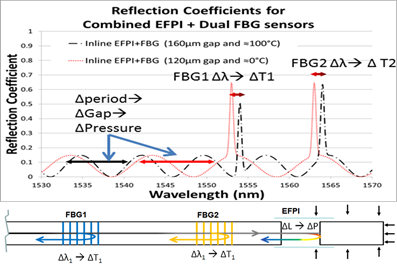Developing Advanced Sensor Instrumentation for Next Generation Nuclear Plants
New nuclear power generation is an important non-fossil fuel option to meet future global electricity demands. To ensure public safety and maintain energy security, the new reactors must be significantly safer and more efficient than previous designs. The Gen-IV design initiative is driving the development of the next generation nuclear plants with designs such as the Molten Salt Reactor, Sodium-cooled fast reactor, Lead-cooled fast reactor, very high temperature reactor and Supercritical-water cooled reactor.
These reactors will operate at temperatures between 500-1200°C, allowing them to operate with higher efficiencies than their predecessors and provide the required heat to produce hydrogen in large quantities without producing additional CO2. The safe and efficient operations of these systems will require pressure and temperature sensors that can survive in the harsh environments of the proposed Gen-IV reactor designs.
To address this need, Luna is researching reliable, high-temperature, radiation-tolerant sensors that provide many inline temperature measurements and high accuracy pressure data using only a single optical fiber.
The research utilizes both Luna’s Optical Backscatter Reflectometer (OBR) and Micron Optics’ Hyperion interrogation systems to explore combining radiation hardened femtosecond-laser-written Fiber Bragg Gratings (fsFBG/FBG) with harsh environment Extrinsic Fabry-Perot Interferometer (EFPI) pressure sensors on a single fiber.
The figure shows the wavelength-dependent reflection coefficients for a two FBGs and one EFPI at 0°C and 100°C, with an EFPI gap of 120µm and 160µm respectively. The bottom of the figure illustrates the sensor design, showing two FBGs written in the fiber and an EFPI gap constructed at the fiber’s tip.
The FBGs strongly reflect light at a single wavelength that increases linearly with temperature. The EFPI reflection is an interference fringe pattern. As the EFPI gap shrinks due to increased pressure, the wavelength range between the fringe maxima increases. The Phase I work is featured in the U.S. Department of Energy’s Advanced Sensors and Instrumentation Newsletter (pages 16-18).
Read More about how Luna Innovations and Micron Optics solve sensing needs for utilities around the world.